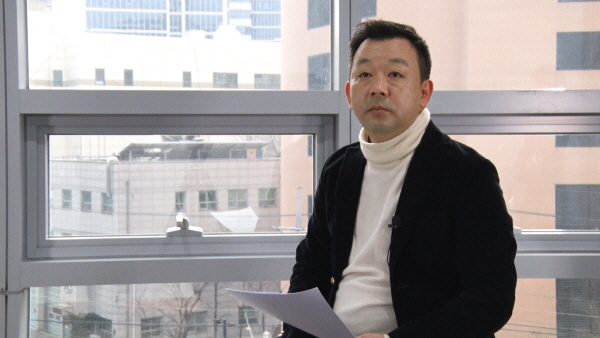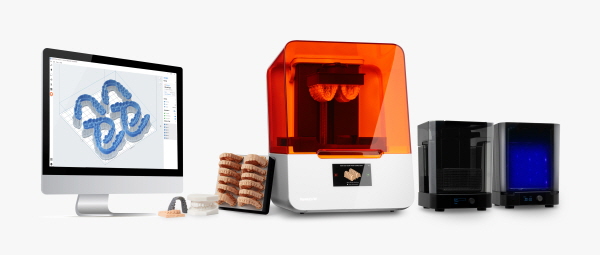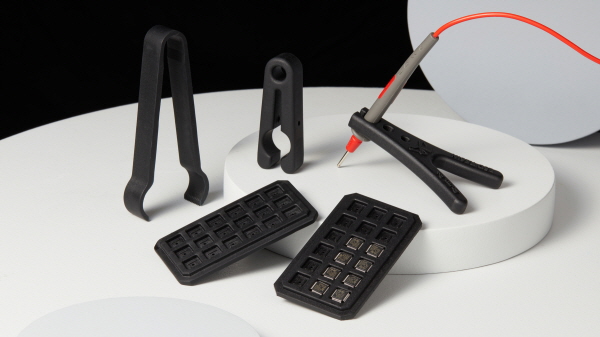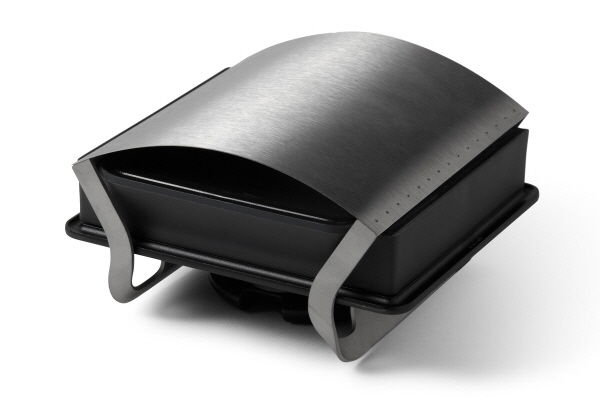2022년 국내 치과 및 의료, 디지털 제조 분야 시장을 적극 확대하겠다고 밝힌 폼랩의 김진욱 폼랩코리아 지사장과 인터뷰를 통해 2022년 계획에 대해 들어봤다.
“폼랩, 고객들과 비즈니스 전 세계 확대 협력”
본사 200여명 박사들 재료 연구, 시장 선점 도움
저비용·고성능 제품공급, 쉬운 접근으로 고객만족
[편집자주]최근 발표한 폼랩(Formlabs, Inc)의 2022년 사업전략에 따르면 폼랩은 올해 식품의약품안전처 재료 인증과 함께 품질과 비용효율이 높은 3D 프린팅 솔루션으로 국내 치과 및 의료, 디지털 제조 분야 시장을 적극 확대할 계획이다. 이를 위해 폼랩은 라인업을 강화하고 다양한 분야로의 서비스 확장에 나서고 있다. 특히 폼랩은 지난해 침체된 3D 프린팅 시장 상황에도 불구하고 2배 넘는 성장을 기록했으며, 올해도 2022년 사업 전략을 바탕으로 국내 디지털 제조 분야 시장을 넓혀갈 것으로 기대를 모으고 있다. 이에 본지는 김진욱 폼랩코리아 지사장과의 인터뷰를 통해 폼랩의 올해 계획과 제품에 대해 들어보는 자리를 마련했다.

▲김진욱 폼랩코리아 지사장
■ 폼랩(Formlabs, Inc)의 회사 소개를 부탁드린다
폼랩(Formlabs, Inc)은 약 10년 된 회사로 한국 지사가 설립된 지는 약 2년 정도 됐다.
폼랩을 한 마디로 표현하자면 ‘혁신’이라고 할 수 있다. IT 분야에서 애플이 혁신 기업이라면 3D 프린팅 기업 중에서는 폼랩이 혁신이라고 할 수 있다.
폼랩은 최근 약 1,800억원 규모로 소프트뱅크 손정의 회장에게 투자를 받았다.
투자 유치를 통해 R&D·전체 비즈니스 영역에 많은 투자를 하고 있다.
3D 프린팅 업계에서는 처음으로 투자를 받을 것으로 알고 있다.
■ 최근 2022년 사업전략을 발표했다
글로벌 전략과 한국 전략의 차이가 있다.
전체적으로 글로벌 시장 측면에서는 스마트 제조, 제조혁신, 제조와 엔지니어링 분야에 대한 비즈니스에 대한 박차를 가한다.
폼랩은 창업한지 10년이 됐고, 지속적으로 제품에 대한 포트폴리오가 확대되고 있다.
데스크탑 SLA 제품은 치과, 의료 쪽에 특화돼 있다.
저희 제품이 기존 제품과 차별화가 되는 게 정교함, 비용대비 효율성 등인데, 특히 정교함 쪽이 많이 강조되다 보니까 치과, 의료, 주얼리, 이런 쪽에서 특화된 제품들인 폼2, 폼3가 메인이 됐었다.
저희 같은 경우에는 식약청 등록이 올해(2021년)부터 진행이 되면서 전세계적으로는 40%의 마켓쉐어를 가지고 갔지만, 한국에서는 많이 시장 진출을 못했던 치과나 의료 쪽에 시장을 폼랩코리아가 주력한다고 말씀드릴 수 있다.
■ 코로나19로 3D 프린팅 산업이 어렵다고 들었는데, 이를 극복할 방법과 향후 3D 프린팅 산업 전망에 대해 듣고 싶다
일단은 제가 최근에 협력사와 메디컬 분야에 대해서 웨비나를 진행한 적이 있다.
그와 관련해 시장조사도 하고, 시장 분석들을 많이 진행했었는데, 확실히 한국에서는 작년하고, 재작년에 시장 규모가 축소된 것은 맞는 이야기다.
일정부분은 코로나에 대한 영향이라고 말할 수는 있겠다.
초반에 오바마대통령의 3D 프린터 이야기가 나오고 전세계적으로 붐이 일었었다.
우리나라도 국가적으로 주요 정부의 4개 부처가 협약을 맺고 진흥법을 만들고, 2년 전부터 3D프린팅 자체를 4차 산업혁명 기술로 인정을 하면서 국가자격증을 만들어 가지고, 2년 전에는 많이 떴었던 경우였었는데 코로나로 인해 많이 주춤 했던 건 사실인 것 같고, 이것은 3D 프린팅 업계만이 그런 것 같지는 않고, 경기 자체가 위축이 돼서 그런 것이 아닌가 생각된다.
그럼에도 불구하고 폼랩 같은 경우에는 나름대로의 니치 플레이어로서 차별화된 영역이 있다고 말씀을 드릴수가 있다.
예를 들자면 제가 처음에 폼랩코리아에 조인한 2년 전하고, 지금 코로나가 진행된 2년 후하고, 2년 만에 두 배 이상의 비즈니스 성장이 나왔다.
글로벌기업 특성상 얼마 매출을 했다고 공개할 수는 없지만 %로만 말씀드리자면 정확히 2.5배 성장했다.
어려운 가운데서도 성장한 것에 대해 곰곰이 해봤다.
폼랩은 10년 전 본사 임원들과 직원들이 비용효율적인 전문가, 산업용 제품을 고객들에게 전달될 수 있도록 만들자라는 비전으로 태어났다.
가끔 프레젠테이션 슬라이드에 쉽게 사용할 수 있고, 전문가용, 산업용으로 사용할 수 있고, 기존 산업의 100분의 1정도의 가격으로 고객에게 전달할 수 있는 제품은 없을까라고 시작한 회사가 폼랩이다.
코로나19에서 비용대비 효과, 착한가격에 고객에게 전달할 수 있고, 기존에 많은 비용을 들여서 쓰셨던 분들이 폼랩을 선택했다고 본다.
저는 폼랩의 이런 비전 자체가 경기 침체에도 불구하고, 빠른 성장을 이뤄냈다고 보고 있다.
전체적으로 시장이라고 하면 많이들 이야기하는 것이 4차 산업혁명, 그중에서 가장 중요한 것이 데이터이고, 여러 가지가 나오지요 AI, 빅데이터 여러 가지가 나오는데 그 중에 하나 꼭 거론이 되는 것이 3D 프린팅이 거론된다.
3D프린팅 자체는 어떤 공정이나 이런 과정 자체의 맨 마지막 단계의 물건을 만들어내는 과정이니까 어떻게 보면 공장이 3D 프린터로 대체된다고 보면 된다.
가장 현재 많이 바뀌고 있는 게 우리나라의 경우 아직 덜 바뀐 케이스가 있지만 글로벌로 보자면 치기공사다. 세계적으로는 전부다 3D프린터로 바뀌고 있는 시점이다.
이런 식으로 본다면 글로벌기업도 그렇고 한국 시장도 마찬가지고 얼마나 빨리 오냐의 문제인 것이지 확실히 시장 성장 속도라든지 시장에 대한 비전들은 충분히 있는 비즈니스이자 인더스트리라고 생각하고 있다.
■ 현재 의료, 시제품 등에서 3D 프린팅이 활발한데 아직 제조분야에서는 확산이 더딘 느낌이다. 제조분야 확산을 위해 어떠한 점이 아직 필요하다고 보는지
시장 규모를 놓고 보면 한국은 OECD 기준 11위 정도의 국가다.
국가경쟁력으로 전 세계 11위 정도의 부자나라인 것이다.
전 세계 제조 강국으로 보면 한국이 미국, 독일, 중국, 일본과 함께 탑 5다.
제가 한국에서 비즈니스를 오래하다 보니까 외국 사람들이 이해를 못하는 부분들이 좀 있다는 것을 알겠다.
예를 들자면 왜 구글이 전세계적으로 시장을 선점하고 있는데 한국은 그러지 못하고 있는가. 왜 네이버 일까?
스타벅스가 전세계적으로 똑같은 UI를 가지고, 똑같은 룩&필로 가야되는데 한국의 인사동은 왜 다를까?
이런 것들을 외국 사람들은 잘 이해가 안 되고 “전 세계 비즈니스적으로 보면 1% 밖에 안 되는데 왜 이렇게 유니크하지”하는 이야기들을 많이 한다.
제가 본사 임원들과 이야기를 하다보면 한국 자체가 기준이 높은 국가인 것 같다. 덴탈 같은 식약청 등록도 본사나 외국에서는 클래스 1등급에서 하던 것을 우리는 클래스 2등급으로 가져가고 있다.
그만큼 기준 자체가 높다는 것이다.
고객들의 기대와 관심이 높다는 것이다.
결론적으로 말씀드리면 한번 터지면 아주그냥 폭발적으로 터지는데 터지기 전까지의 기준자체의 기준 자체의 잣대까지 올라오는 것이 힘든 나라가 한국이지 않는가 생각된다.
다른 나라들과의 차이점이라고 하면 제조 쪽도 역시 대기업들이 많이 드라이브하는 시장이다.
다른 나라에 비해서 벤처, 중견기업보다는 대기업이 주도하는 것은 우리나라 대한민국의 특징이기 때문에 뭐 그런 면들을 놓고 봐서도 작년에 재작년 국내 대기업 연구소분들과 미팅을 했는데 그 이야기는 이미 대기업들도 아이디어를 가지고 이미 시장을 선점할 준비를 하고 있다는 것이다.
그런 측면에서 조금 더딘 느낌은 있지만 한국 자체가 고객이 쓰는 엔드 프로덕트 보다는 아직까지 3D 프린팅의 시장 자체가 공공교육 연구소 쪽에 한 30% 이상 마켓쉐어를 가져가고 있는 게 글로벌하고 한국의 가장 큰 차이점이기도 하다.
그럼에도 불구하고, 탑5의 제조강국이라는 장점이라던 지 어떤 크리에이티브라던지 문화라던 지 이런 감성을 주도하는 재능들 그리고 그런 것들이 맞춰져 가지고 어느 순간 고객의 기대치에 맞춰지는 시기가 온다면 그것이 내년이 될지 내후년이 될지 그것은 모르겠는데 그런 시기가 온다고 하면 아마 시장의 성장세는 가히 폭발적이지 않을까 생각이 든다.
대한민국이 충분히 잠재 가능성이 있는 나라라고 생각이 된다.
■ 폼랩의 폼 3L, 퓨즈 1 등 주요 판매 제품에 대한 소개를 부탁드린다
폼랩이 처음으로 시작한 것은 SLA 3D 프린터다.
3D 프린팅의 기술이 여러 가지가 있다.
대표적으로 FDM 머신, SLA 머신, SLS 머신, 여러 가지의 머신들이 다양하게 있는데, 그것은 3D 프린팅 기술의 차이로 분류된다.
SLA는 액체 레진을 레이저로 쏴서 만드는 제품이고, SLS 제품은 파우더를 적층 형태로 만드는 제품이다.
제가 합류한 2년 전만 하더라도 SLA 프린터 폼2가 많이 팔리기 시작하던 시기였다. 그 다음에 버전이 업그레이드 된 새로운 폼3가 나왔었는데 작년 재작년 2년 사이에 그 SLA 제품의 사이즈의 한계를 극복한 폼3L이라는 제품이 나왔다. 한 3배정도의 규모로 산업용으로 사용할 수 있는 제품이다.
그리고 덴탈이라던 지 메디컬 쪽에 특화된 폼3B라든지 폼3BL 등 프리미엄 제품군이 출시되며, SLA 제품군에 대한 포트폴리오가 확장됐었다.
가장 최근에 비즈니스를 시작한 SLA시장, 퓨즈 1이라는 제품이 나와 가지고, 기존의 레진 말고, 파우더 형태로 적층을 하고 있는 SLA의 제품. 어떻게 보면 산업엔지니어링 쪽에 특화된 제품이다.
그 다음에 후처리 폼3L 워시큐어라는 후처리 제품군까지 프로덕트 라인업이 넓혀지고 있으며, 제조 엔지니어링에 포커스가 맞춰져 있다고 볼 수 있다.
기술마다 보급형으로 많이 시장에 나와 있는 제품들은 FDM 제품들이 많이 나와 있고, 그래서 기술에 따라서 여러 가지 영역이 있는데 폼랩 같은 경우에는 SLA 제품으로 시작을 해서 시장의 각광을 받기 시작한 것이 폼2 제품이었고, 그 제품이 좋은 가격의 정교함과 비용대비 효과 섬세함 이런 것들을 갖춰서 덴탈, 치과시장이나 주얼리 시장에서 독보적으로 이름을 알린 그런 기업이 됐었는데 폼2, 폼3의 3배정도 크기가 된 폼3L 이 출시됐다.
그 제품이 SLA의 기술로 대변되는 제품이다.
최근에 조금 전에 말씀드린 SLS 분말파우더로 적층형태로 하는 SLS 제품이 시장에 출시가 됨으로 인해가지고 산업용이나 제조용 엔지니어링 쪽에 쓰일 수 있는 제품자체 라인업이 완전히 구비가 됐다라고 말할 수 있다.
크게 차이점 자체는 그 소재의 차이를 가지고, 내가 만들고자 하는 제품이 어떤 소재에 적합하냐에 따라서 어떤 제품을 선택하는 게 맞을 수 있다.
예를 들자면 의료기기, 주사기, 실린더, 파우더, 이런 것들은 SLA의 액체 레진 제품으로 할 수 있고, SLS 제품으로 본사나 국내에도 최근의 사례, 지난 웨비나 사례에서도 말씀드렸지만 개인형 차별화된 부목, 깁스 형태, 척추교정, 이런 형태 같은 것들은 퓨즈 SLS 제품으로 양산이 되는 케이스가 많이 있다.
그래서 재료의 차이고, 3D 프린팅 기술의 차이라서 어떤 제품을 내가 제조할 것이냐는 기획 의도에 맞게 제품 자체를 선택해서 진행하면 될 것 같다.
■ 향후 3D 프린팅 개발 방향과 국내에서의 활동 방향에 대해 듣고 싶다
폼랩 본사 차원에서는 한 가지 말씀을 드리면 비즈니스를 놓고 보면 전 세계의 55% 정도가 3D 프린터 비즈니스다. 나머지 40∼45%가 재료 비즈니스다. 그 정도로 프린터도 중요하지만 어떤 재료냐에 따라서 기술의 영역이 극과 극이다.
예를 들어서 치과의 드래프트라던 지 하이템프(몇 천도의 열에도 견딜 수 있는)라든지 실리콘 고무 같은 말랑 말랑한 재료들. 재료 자체가 상당히 중요한 포인트가 되기 때문에 본사에서도 약 200명 정도 화학 전공 박사들이 재료 개발에 투자를 하고 있다.
지속적으로 새로 개발된 재료들이 시장에 출시가 많이 되고 있기 때문에 그런 재료들이 향후 시장을 선점하는데 도움이 될 것 같다.
국내에서는 초반에 말씀드렸다시피 엔지니어링이나 제조쪽에 특화된 폼3L SLA 제품이라던 지 거기에다 워시나 큐어 후처리를 손쉽게 할 수 있는 그런 제품들도 나오고, SLS 제품인 퓨즈1 등도 나와서 어떻게 보면 제조나 엔지니어링 쪽에 특화되게끔 시장을 열어갈 수 있는 계기가 된 것 같고, 초반에 말씀드린 바와 같이 식약처 등록을 통해서 의료 치과, 시장을 만들어가는 시기가 되지 않을까 생각된다.
한 2년 정도 시장을 다니면서 국내 벤처기업 대표들을 만나봤다. 의외로 메디컬 쪽이나 의료 쪽으로 상당히 국내 내수뿐만 아니고 세계적으로 시장을 선도하는 국내 기업들이 있었다.
예전에는 잘 몰랐다.
국내 의료 쪽에 벤처기업을 가지고, 폼랩 본사와 OEM 형태로 갈 수 있는 형태가 있었다.
개인적으로는 박사과정에서 벤처 이런 쪽으로 공부를 하다보니까 국내 벤처 기업들이 내수뿐만 아니고 해외로 비즈니스 활로를 펴나가는 이런 것들에도 관심이 많은데 이런 측면에서도 기존의 IT쪽의 빅자이언트 기업과는 달리 협약이나 OEM 형태의 파트너십을 가지고 서로 윈을 할 수 있고, 국내 벤처기업들은 메디컬 스캐너 업체들과 협약을 한다.
메디컬 스캐너 업체가 전세계적으로 폼랩하고, 폼랩의 고객 베이스로 나갈 수 있고, 국내 레진이나 재료 같은 것을 생산을 하는 전문 업체다.
이런 부분들이 우리 R&D와 같이 협약을 해서 폼랩의 이름으로라던 지 폼랩의 고객대상한테 비즈니스를 전 세계로 판로를 가져갈 수 있는 이런 파트너십이나 OEM 형태들도 아마 조만간 나오지 않을까 싶어서 개인적으로는 그런 부분에서 의미가 있고, 국내 그런 기업들과 상생하는 관계가 되지 않을까라는 생각이 든다.
■ 마지막으로 독자들께 한 말씀 부탁드린다
제가 작년까지 한 2년 정도 대학에서 강의를 했었다. 취업 관련한 부분이라던 지 취업멘토링도 했었고, 특강형태로 10여 년 전부터 대학교 졸업반 취업을 앞둔 학생들하고, 많이 대면을 하는 기회가 많았다.
그러면서 제가 3D 프린팅 업계에 와서 지금 플레이어들을 놓고 보니까 사실은 전공하고, 학벌이 크게 의미가 없었다.
어떤 잘 하는 영업사원은 펜싱 하던 친구를 봤었고, 어떤 잘생긴 친구는 아이돌을 준비하다가 이쪽 비즈니스에 뛰어든 사람을 봤었고, 전혀 우리가 알고 있기로는 좋은 대학을 나와 전공에 따라 먹고 사는 것이 결정이 됐었는데, 지금 이쪽에서 플레이를 하는 것을 보니까 어떤 관심을 가지고, 관심이 있으면, 사실은 내가 뛰어들 수 있는 영역이 아닌가 하는 생각이 들어서 뭐 앞으로 정부를 비롯해 우리나라 학계나 공공기관이나 저희들 같은 사기업들이 협업해서 시장을 만들어나갈 것들은 많이 있기는 하지만 그럼에도 불구하고 앞으로 비즈니스나 시장 자체가 예전의 우리 아버님 부모님 세대처럼 어떤 모든 사람이 동일한 제품을 쓰고, 하나의 제품이 대박이 터지는 제품이 아니고, 어떤 그 사람의 감성이나 커뮤니티에 맞는 개인화된 차별화된 비즈니스에 맞는 형태로 시장이 변하기 때문에 내가 관심만 있으면, 충분히 4차 산업의 축이기도 하고, 하나의 비즈니스 영역으로 좋지 않나 생각하고 있다.
저희가 탑5의 제조 강국이다. 크리에이티브나 이런 것이 좋다. 예전에는 전 세계 기능사 대회 같은 것을 하면 한국이 꼭 일등을 하는 것이 무엇이 있느냐면 기능사들 손으로 만드는 것들이다.
그런 재능들이 한국 사람들이 기본적으로 가지고 있는 것이고, 다른 나라 사람들과는 차별화된 재능들이기 때문에 일자리 창출 차원에서도 20대에 무엇을 할 까 고민을 하는 그런 사람들에게 좋은 대안이 될 수 있고, 어떻게 보면 저같이 50대, 직장을 끝나서 새로운 세컨 라이프를 시작할 수밖에 없는 그런 50대의 분들에게도 내가 관심을 가지고 무엇인가를 할 수 있다면 예를 들어서 돈 1,000만월을 가지고, 나만의 공장을 만들 수 있으니까 예전처럼 모든 제품을 만들어서 내가 만든 제품을 모두 쓰는 것은 아니지만 나름대로 내가 비즈니스 아이디어를 가지고 할 수 있다.
예를 들어서 내가 낚시를 좋아한다. 낚시찌를 내가 여러 가지 형태로 다양한 재질로 여러 개를 만들어서 낚시를 좋아하는 커뮤니티에 비즈니스를 할 수 있는 이런 일자리 형태나 어떤 양질의 일자리들이 많이 나오는데 기여를 하고 있다고 생각하고 있다.
마지막으로 3D 프린터는 내가 머릿속에 있는 아이디어를 정말 쉽게 제품화하는 것이다.
최근에 보니까 집도 3D 프린터로 만들고 제가 말하고자 하는 포커스는 뭔가 하면 비즈니스는 아이디어 승부인 것이고, 기존세대들이 똑같은 것을 입고, 쓰고, 먹는 것이 아니고, 이제는 세대가 바뀌면서 어떤 감성 그 사람만의 감성이다.
저희 협력사 젊은 영업사원들이 저에게 “지사장님 이거보세요 이거 세상에서 하나밖에 없는 반지에요”이런 이야기를 하고, 퓨즈1이 나왔을 때 협력사 대표님이 “지사장님 이거 하나 만들어 드릴까요? 이거 명함 지갑이에요. 이름까지 새겨 드릴게요” 이런 식으로 모든 사람이 쓰는 것을 그대로 쓰는 것이 아니고, 나만의 의미를 담을 수 있는 제품을 만들 수 있다는 장점이 있기 때문에 3D 프린팅 자체를 어떤 아이디어와 접목을 시키면 향후의 비즈니스나 시장 경쟁력 측면에서 많은 도움이 되지 않을까하는 생각을 하고 있다.

▲폼 3B+에코시스템(폼3B+, 폼워시, 폼큐어)

▲ESD 레진(ESD Resin)으로 출력한 출력물

▲특허 받은 신속 해제 기술(Quick Release Technology)로 신속한 출력물 분리 작업을 지원하는 빌드 플랫폼 2(Build Platform 2)



